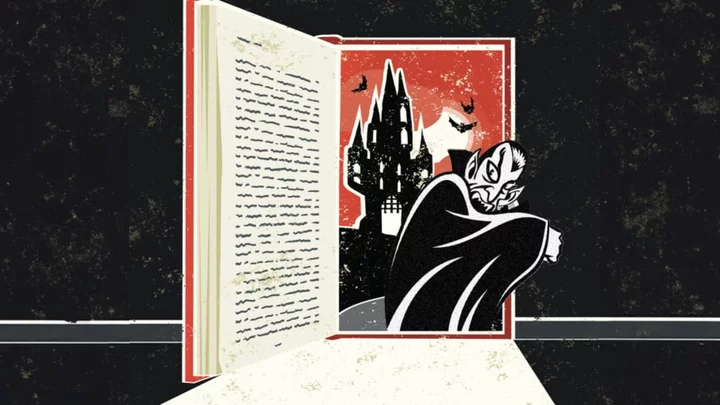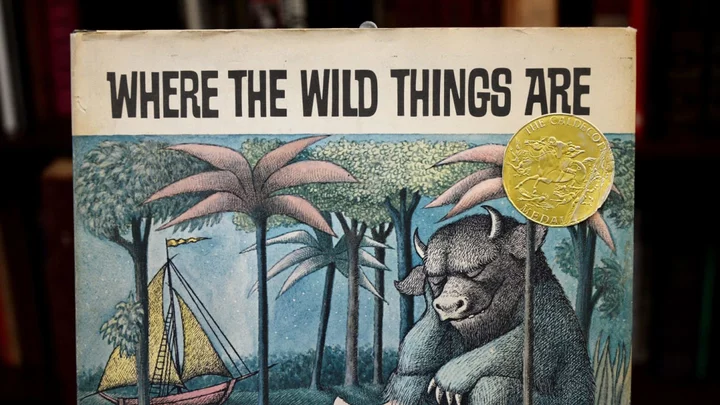In May 1897, London’s Archibald Constable and Company published Bram Stoker’s Dracula, a book that would have an influence far exceeding its sale price of 6 shillings. The tale revitalized and popularized the “modern” vampire: an almost tragic, erotic, semi-romantic being stuck somewhere between life and death who stalks us in the darkness.
With Dracula, Stoker had created what has been called “an entire genre of literature and film,” but he had not created the aristocratic predator that still haunts us today. History, legend, and a rainy night in Switzerland had done that 80 years earlier.
From Early Blood Suckers to Spooky Ghost Stories
Vampires and the fear they engender have been with us “for almost as long as written records exist,” Wayne Bartlett and Flavia Idriceanu write in their 2006 book Legends of Blood: The Vampire in History and Myth. And during the 17th and early 18th centuries, as previously isolated parts of Europe—especially the Balkan states—became more open, what Bartlett and Idriceanu call an “epidemic” of supposedly true vampire stories rippled through the populations of the Continent. These tales gave birth to a fledging vampire literature, which included works like Johann Wolfgang von Goethe's “Die Braut von Korinth” (1798) [PDF] and Robert Southey’s monumental epic poem “Thalaba the Destroyer” (1801).
These threads of myth and legend came together in June 1816 (known as “the Year Without a Summer”), when the Romantic poet Lord Byron found himself in Switzerland on a rainy day and invited his neighbors—fellow poet Percy Bysshe Shelley, his soon-to-be wife Mary Wollstonecraft Godwin (a.k.a. Mary Shelley), and her stepsister, Claire Clairmont—to join him. Also on hand was John Polidori, who had graduated with a degree in medicine in 1815 and was traveling with Byron as his doctor. But Polidori, whose father was a writer and printer, had writerly ambitions of his own.
Looking for something to entertain themselves until the rain stopped, the group began reading Fantasmagoriana, a collection of German ghost stories that had been translated into French. Byron then suggested that each of them write a similar story, and they agreed (except for Clairmont, who seemingly chose not to participate). Shelley, however, quickly gave up; Byron wrote a fragment that was later published alongside his poem Mazeppa; Godwin’s tale became the germ of her 1818 novel Frankenstein.
While many sources say that Polidori’s story would go on to be published in 1819 as The Vampyre, the truth is significantly more complicated.
Polidori claimed that the tale he began as part of the competition was Ernestus Berchtold, published in 1819. But Mary Shelley, in her introduction to the 1831 edition of Frankenstein, said that Polidori’s contribution to the contest was “some terrible idea about a skull-headed lady,” which doesn’t really resemble Ernestus Berchtold. There are various explanations for the disagreement—that one of the two authors was mistaken; that Polidori actually worked on two stories [PDF]; or even that Ernestus Berchtold and the story Shelley mentions are actually the same story at different points in conception. But Polidori’s more important work, The Vampyre, actually emerged from Byron’s piece.
At some point, Byron read his work to the group. The extant version of the story, now known as “A Fragment,” features a character named Augustus Darvell traveling with the narrator to modern Türkiye, where he dies after having the narrator promise to not reveal his death to anyone. There was no hint of vampirism or the supernatural, but Polidori claimed that Byron was going to continue the story with the narrator returning home to find a not-dead Darvell “moving about in society.”
According to one theory, Polidori made note of Byron’s tale, and at some point later that year, told it to “a lady,” who felt that the fragment couldn’t possibly be turned into anything that could “bear the slightest appearance of probability.” The doctor disagreed; over the next few mornings, he wrote out a story based on Byron’s fragment and left it with her.
And that was the end of it—until two years later, when someone within the lady’s circle got their hands on Polidori’s completion of the fragment and sent it to an English publisher named Henry Colburn. (In the version of The Vampyre that was eventually published, Augustus Darvell becomes Lord Ruthven, almost certainly a reference to the novel Glenarvon, where Lady Caroline Lamb—Byron’s former mistress—writes about a Byron-inspired character named Clarence de Ruthven.)
However, more recent scholarship has suggested Polidori wrote The Vampyre as late as 1819—far removed from his time with Byron, based only on his vague memories of what Byron’s story was about, and possibly as a way to drum up interest in the upcoming publication of Ernestus Berchtold by tying himself to the same literary event that produced Frankenstein. (It might not be a coincidence that Frankenstein is subtitled The Modern Prometheus, while Ernestus Berchtold is subtitled The Modern Oedipus.) In that case, it’s possible Polidori leaked the story to Colburn himself.
Whatever happened, the story was published in an 1819 The New Monthly Magazine as “The Vampyre: A Tale by Lord Byron.” Soon after, Polidori wrote to the publication saying that a mistake had been made “with regard to the tale of The Vampyre—which is not Lord Byron’s, but was written entirely by me.” He requested that the magazine issue a correction.
Byron, who was at that point living in Venice, flatly denied writing The Vampyre. (A friend recalled that Byron had conceded that “The foundation of the story was mine,” but he had to repudiate it because he didn’t want people to think he was so vain he’d “write in that ridiculous manner about myself”). Eventually, he sent a publisher in England at least some of his actual fragment so the publisher could see how different the two stories were. “A Fragment” was published alongside Mazeppa—against Byron’s wishes.
The Vampyr and Beyond
Everything surrounding the publication of The Vampyre was a major scandal, and Polidori’s career was ruined. His story, however, would succeed: It was printed and republished as a genuine Byron work for decades, and was translated and widely read on the Continent as well, spawning multiple reprintings and international editions. And while it may not have been the only piece of blood-sucking prose available at the time, it was a deviation from the norm.
According to Dr. Robert Morrison, the vampires of literature and folk tales in that era were “shaggy, fetid, and bestial” creatures that hunted their own family members, neighbors, and livestock. “Polidori elevated the vampire to the ranks of the aristocracy,” Morrison writes, “[and] launched a vampire craze that after two centuries still retains its ability to grab us by the throat.” His vampire, Lord Ruthven, was “clearly model[ed] … on Lord Byron, for the two have in common good looks, callousness, high rank, mobility, wealth, and keen sexual appetites.”
Following the publication of The Vampyre came even more vampire tales, some of which put their own spin on the creature. Edgar Allan Poe was probably inspired by vampiric lore when writing his story “Berenice,” published that 1835, and The Fall of the House of Usher, published in 1839. Varney the Vampire, serialized in pamphlets between 1845 and 1847, introduced the concept of vampires having sharp, “fang-like teeth.” Some modern scholars claim to have found vampire motifs in Emily Brontë’s 1847 novel Wuthering Heights, and Sheridan Le Fanu’s Carmilla, the story of a lesbian vampire, appeared in serial form in 1872.
Stoker was influenced by many of these early vampiric works, especially Carmilla, and he was likely aware of The Vampyre. The author and theatre manager had already published several inconsequential novels when he took a holiday to the British coastal town of Whitby in 1890. The village’s atmosphere, the events of that holiday, and research he conducted in the local library—where he came across the word Dracula in a book—all influenced his story, which would come to eclipse all earlier vampire literature. (Other versions of the tale have Stoker allegedly meeting a Hungarian writer and linguist named Ármin Vámbéry, who supposedly told Stoker dark tales of Transylvania—though some modern scholars believe Vámbéry’s influence on Stoker and his story is a myth.)
After Stoker, Dracula became the vampire of our stories, our movies, our foggy nights—and our nightmares.
This article was originally published on www.mentalfloss.com as The Wild History of the Tale That Created the Modern Vampire (And No, It's Not ‘Dracula’).









